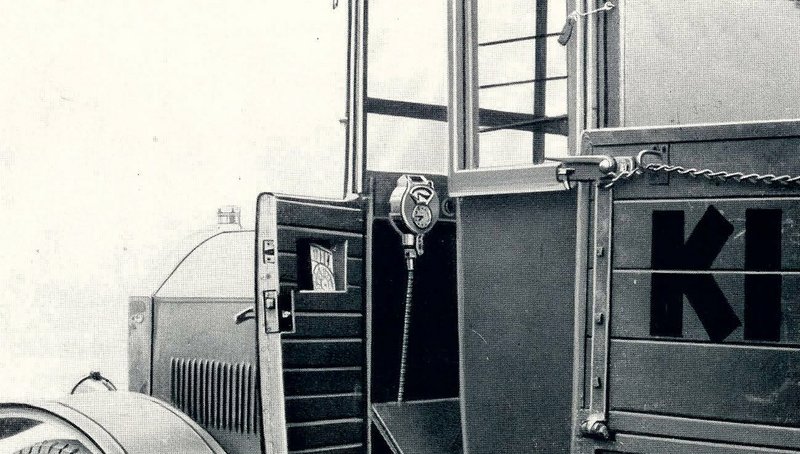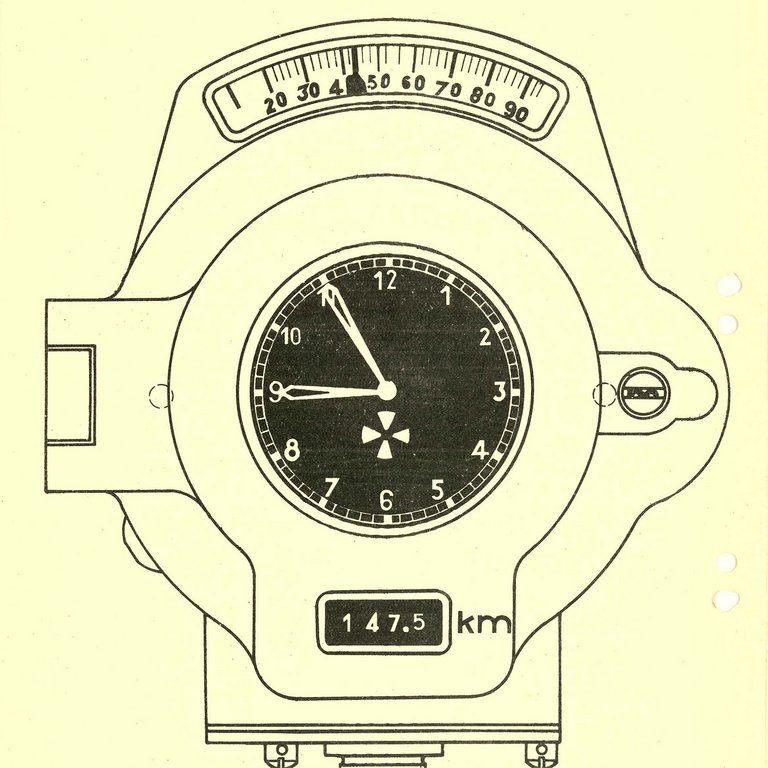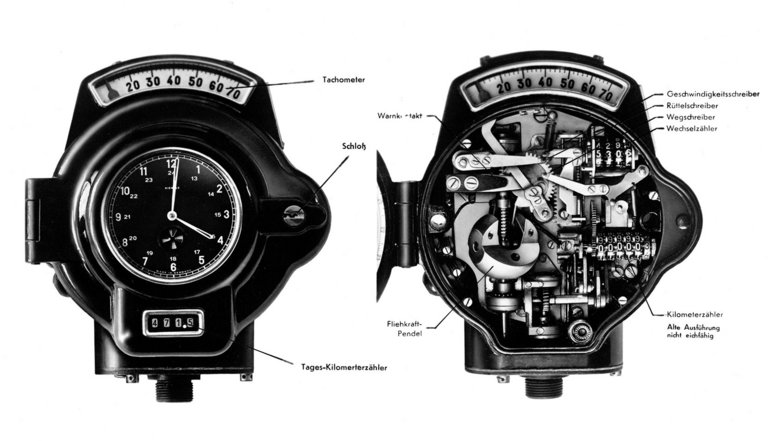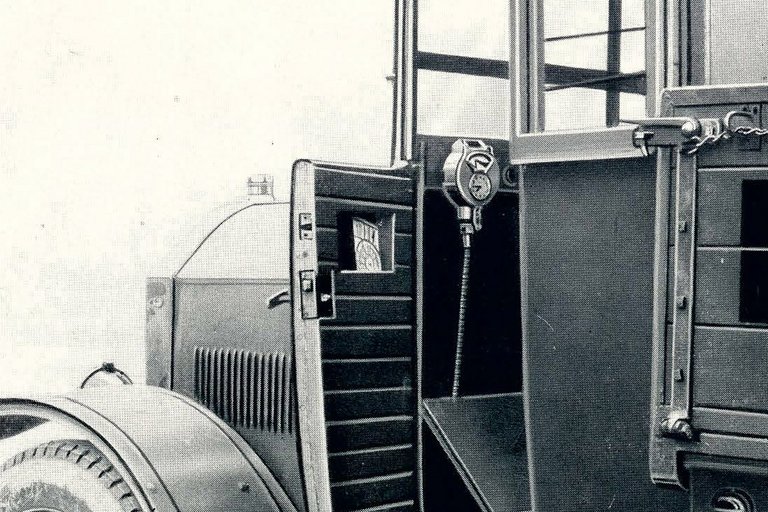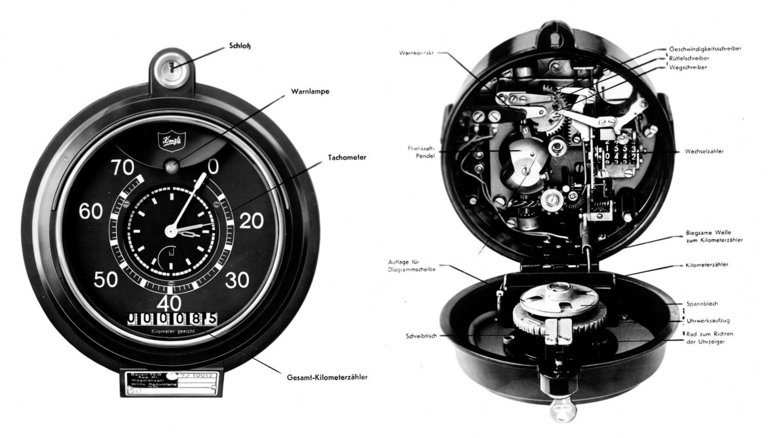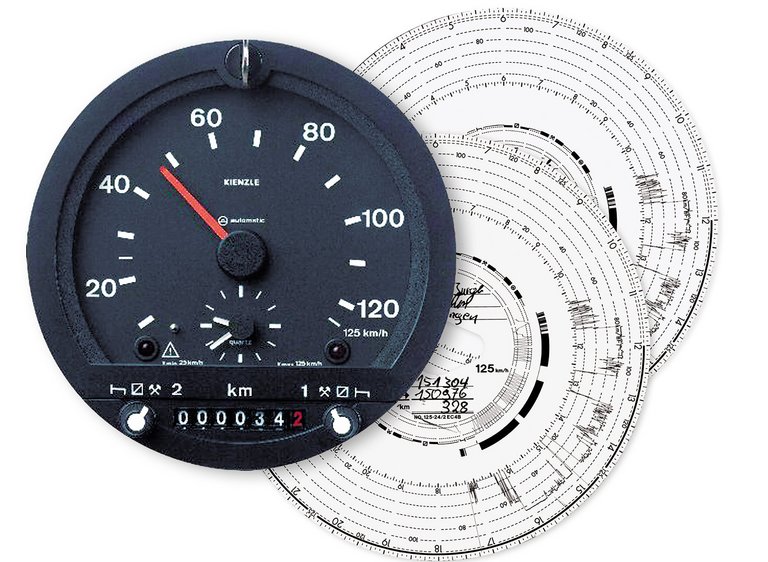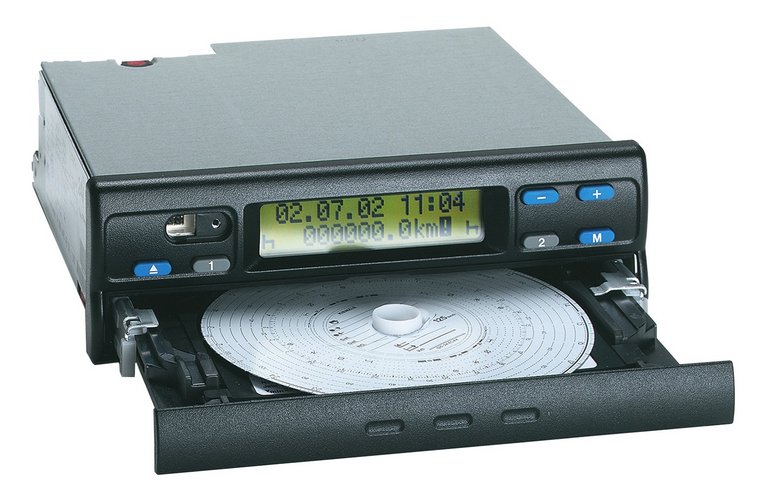100 Years Tachograph
Hardly any other instrument in the commercial vehicle cockpit has changed everyday life on Europe’s roads the same way the tachograph has. It has made competition in transport logistics fairer, working conditions for drivers safer, and the management of fleets more efficient. And it has been doing so for 100 years. Because that is how far back the history of the VDO tachograph goes. Its roots lie in the Black Forest, or more precisely in Villingen, Germany, where 1,300 of our Continental colleagues are still manufacturing, among other products, the latest models of the tachograph, the DTCO. It was here that Dr. Herbert Kienzle, the father of the VDO tachographs, invented the Autorex clock at Kienzle Uhrenfabrik. He found the necessary knowledge for the development of such a sensitive instrument within his own family. He comes from a watchmaking dynasty based in Schwenningen, Germany, so he inherited the knowledge of the importance of precision and the feeling for measuring times, distances and speeds from them.
Since then, the tachograph has undergone constant development and supports drivers, fleet operators as well as public authorities in complying with and monitoring rules and laws. In this booklet, we want to briefly trace the transformation that the tachograph has undergone over the last century to become the central compliance instrument in freight transport. I am, however, sure that journey is far from over. At the Continental site in Villingen, we will continue to shape the future of the tachograph with a passion for precision and in the tradition of Kienzle Uhrenfabrik – hopefully for another 100 years.
1923

First rules for long distance fright transport
At the beginning of the 20th century, there were no specific traffic laws for motor vehicles: the car was a luxury item reserved for the rich and powerful, and they simply had to abide by the same rules that applied to horse-drawn vehicles. But when, at the beginning of the 1930s, delivery traffic also became more and more motorized and the number of trucks on Germany’s roads increased, it was time for the first “Law on Long-distance Freight Transport by Motor Vehicles”. It was passed in 1935 and stipulated, among other things, that transport companies as well as freight and forwarding agents had to be licensed by the government and needed to join the “Reichs-Kraftwagen-Betriebsverband” – the German motor vehicle business association. This association was responsible, among other things, for ensuring that the transport tariffs were adhered to. In the event of violations, extensive sanctions loomed, including the withdrawal of the licence. In the years leading up to the beginning of the Second World War, further regulations were passed that also affected freight transport: the “Working Time Regulation” from the Ministry of Labor made it compulsory to keep a logbook – or alternatively to install a tachograph in the vehicle. And the “Regulation on the Operation of Motor Vehicle Companies in Passenger Transportation” prescribed the use of a tachograph in all buses and coaches in non-scheduled service from 1939 onward.
1927: The first of it's kind
1933: The calibratable successor
1935: A hit series
1936: The TCO 7
1952: Now an official control instrument
1952 saw the launch of the TCO 8, in which the speed scale was significantly enlarged and thus more clearly designed. In addition to the classic one-day-one-driver version, the tachograph was also offe ed as an automatic seven-day device, with a change counter as well as driver change registration. This meant that the diagram disc did not have to be changed every day if a driver was on the road in the same vehicle for a whole week. The device also kept an eye on speed changes at intervals of 10 km/h and thus provided information about the driving style: the fewer changes for the same driving distance, the more evenly and thus more resource-efficient was the journey.
1974: The first European Tachograph
The most important further development of the Kienzle tachograph in the 1970s was the TCO 1311 – the first tachograph designed in acco dance with the special requirements of the current EEC regulation that could and should be used throughout the European Community. It was first p esented at the IAA in 1973 and went into series production in mid-1974, just in time for the specified changeover deadlines. The EC tachograp recorded the distance and speed traveled as well as the working, driving, rest and presence times as well as their interruptions.
Furthermore, it registered every enclosure opening, so that access to the diagram discs could also be traced without any gaps. The TCO 1311 also took a step forward in technical terms and benefited f om a pulse generator mounted on the gearbox output shaft, which electronically transmitted the mechanical rotation of the engine to the tachograph – with positive effect on the measuring accuracy. This Kienzle Tachograph Sensor (KITAS) is still in use today. In addition, the now missing shaft made it much easier to install the device.
1992: Round is out, flat is in
At the beginning of the 1990s, the tachograph from the Black Forest approached its current flat form: as the FTCO 1319 flat tachograph, it could be integrated asily into the dashboard of a commercial vehicle from 1992. Instead of disappearing under a cover, the diagram disc now was fed through a retracting mechanism into the tachograph where it was then brought into the correct position.
The digital era begins
The IAA in 1997 marked an important turning point in the history of tachographs. On the one hand, the old round shape was finally a thing of the past with the modular tachograph presented there, the MTCO 1324, which fitted into the standa dized radio compartment. Vehicle designers were looking forward to the new creative freedom. The digital age also started then with the display of all driving data on a digital display – this marked the end of the separation between the recording and the display device. But the days were also numbered for the diagram disc as a mechanical storage medium.
2006: Complete computer system in radio format
The first generation of the digital tachograph DTCO is a complete computer system with an integrated display for menu navigation and user guidance, printer, real-time clock, front-panel test, diagnostic and information interfaces, CAN interface as well as interfaces for connecting with the instrument cluster. On the market since 2006, it is still in widespread use. It stores all the information about drivers and journeys in an internal mass storage with a capacity of up to one year. In addition, driver-related data such as working, driving and rest times are recorded on chip cards for a period of 28 days. Access to the tachograph data is clearly regulated for all necessary control processes: driver activities, events, incidents and vehicle changes are stored on the driver card. A company card allows the read-out of the vehicle data from the mass storage as well as data from inserted driver cards. Control cards enable authorities to access information relevant to the law. And workshops can use a special workshop card to unlock the digital tachograph’s calibration function for testing and inspection purposes.
2019: The smart generation
Since 2019, the second generation of the digital tachograph by VDO was on the market with the DTCO 4.0, also known as the smart tachograph. In addition to comprehensive data recording and enhanced data security, it also features GNSS (Global Navigation Satellite Systems) positioning. By means of DSRC remote communication (Dedicated Short Range Communication), control data can also be retrieved during drive-by.
Its successor, the DTCO 4.1, will celebrate its premiere in 2023 – exactly 100 years after the Autorex clock recorded the driving and stopping times of a commercial vehicle for the first time in the Black Fo est. In addition to the classic tachograph data such as working, driving and rest times etc., this tachograph will not only automatically record border crossings and better document cabotage tours as well as posting of drivers in particular. It will also provide the basis for many other functions, from loading and unloading of the vehicle to optimized freight allocation and harmonized European tolling – in other words, a truly smart tachograph.
2023: Smart tachograph mandatory within the European Union
Since August 2023, a second-version smart tachograph must be installed in all newly registered commercial vehicles in the European Union. Continental will be equipping the first commercial vehicles with the new DTCO 4.1, the second version of the smart tachograph, just in time for the August 21, 2023 deadline.
VDO - A Continental brand
Continental has published a 40-page booklet on the history of the VDO tachograph - pdf (13.68MB) – it can be downloaded as a PDF file. There is also a web version of the historical facts and anecdotes. Learn more about the history of the VDO tachograph.
(Status: September 2023)
